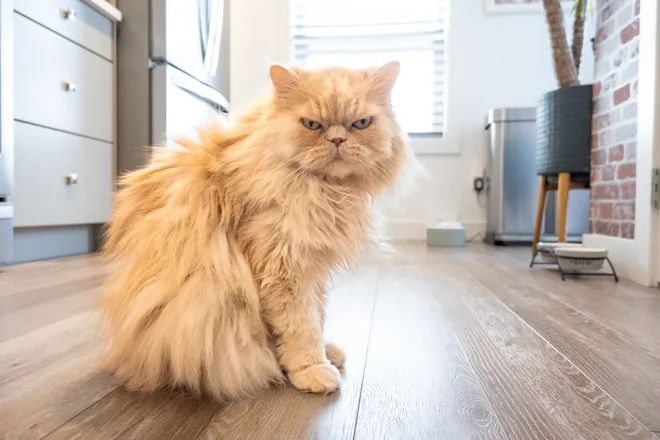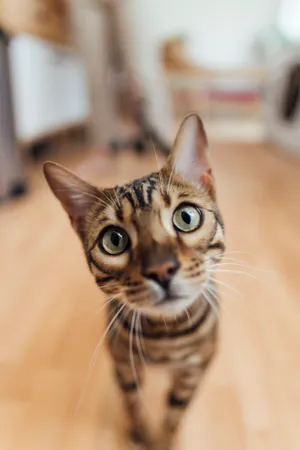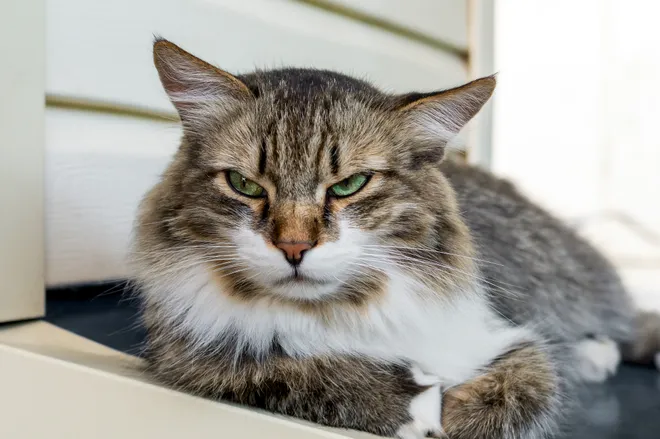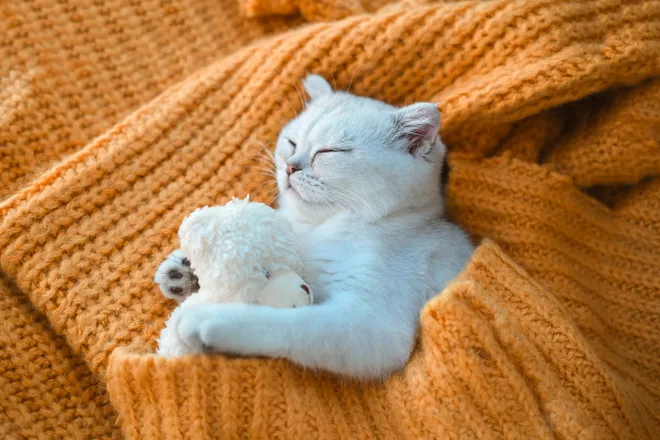Cats use nearly 300 unique facial expressions to communicate, new study shows

We often regard the fuzzy felines sharing our homes as still something of a mystery. Cats, like dogs, can make loving, fulfilling and entertaining pets, but they are distinctly different from our canine companions.
There are many things we still don't know for sure about domestic cats – we're not even sure how they produce their famous purr. They also rely on a more subtle body language to get messages across, meaning us humans are at times guilty of misunderstanding or missing their cues altogether.
As it turns out, their means of communication amongst themselves are even more complex than we originally thought. We are familiar with their purrs, hisses, growls, arched backs or puffed out tails, but there is plenty more going on beneath the surface, researchers have found.
It's known that cats usually don't meow for each other but instead for us as a tactic developed through adaptation and evolution. A new study, however, has shed more light on how domesticated cats do "talk," and it involves a huge array of nearly 300 unique facial expressions.
Signs your cat is about to duke it out:Cats give some clues before a fur-fledged cat fight breaks out. Here's what to watch for.
Study identifies 276 unique facial expressions in cats

In a study published in journal Behavioural Processes, researchers Lauren Scott and Brittany N. Florkiewicz looked toward a Los Angeles cat café to observe the 50 cats living there. Over the course of a year, the team recorded 194 minutes of footage after the café closed to visitors for the day. They focused specifically on recording and reviewing the cats' facial expressions when interacting with each other.
They then reviewed the footage and coded facial muscle movements not directly related to breathing, chewing, yawning or other obviously non-communication functions.
They found a total of 276 distinct facial expressions made out of varying combinations of 26 facial movements such as parted lips, jaw drops, dilated or constricted pupils, blinks and half blinks, pulled lip corners, nose licks, protracted or retracted whiskers, and/or various ear positions.
The expressions were largely able to be sorted into two major categories: friendly, which constituted 45% of recorded expressions, and aggressive, which made up 37%. The remaining 18% were too ambiguous to clearly categorize (cats need to keep some of their mystery intact, after all.)
Studies have yet to figure out exactly how many facial expressions humans or dogs are capable of producing, but we do know humans have 44 unique facial movements used to create expressions and dogs have 27, though we do not yet know what they combine into. However, chimpanzees have been studied and found to make 357 expressions, not a far cry at all from domestic felines.
While we cannot say for sure what most of these complex expressions mean, some can be guessed fairly easily or by using a rule of thumb. For example, forward-facing ears and whiskers and relaxed mouths and eyes are generally friendly whereas ears, whiskers and mouths pulled back often indicate anger or dissatisfaction.
Keep pets safe this fall:Love everything fall? These seasonal items in your home could be dangerous for your pets
How do cats communicate with humans?

Believe it or not, cats do sometimes do things to please humans. The most significant example of this is probably the development and use of the meow, which felines generally do not use to "speak" to each other outside of kittenhood.
Cats have been evolving alongside humans for a shorter period of time than dogs, who have been growing in tandem with us for at least 15,000 years, though it could well be even longer. Recorded history shows cats first started working alongside us 10,000 to 12,000 years ago, and the relationship began as a symbiotic one where cats kept our pest populations under control and we, in turn, provided prime dining locations.
Once they decided they liked humans enough to tolerate living alongside them, cats learned that their new two-legged friends were not very good at picking up what they were trying to tell us. Kittens already meow when young to attract the attention of their mothers, so they began using the technique on us.
Researchers have traced the evolution of the African wildcat, the domestic cat's closest relative, and found that the sound of feline vocalization changed over time to become more kitten-like and attractive to the human ear. Doing what they do best, cats soon learned how to get just what they wanted from us with these newly developed meows.
How do cats communicate with each other?

While the study was able to identify a plethora of unique facial movements and expressions in our feline friends, it wasn't able to yet determine exactly what they all mean.
While we can make educated guesses based on some more obvious signs such as pinned ears, squinted eyes and hissing mouths meaning kitty is angry, many of the more nuanced intraspecies communications are lost on us humans.
Once they are out of kittenhood, cats use meows on people but not each other, opting for more subtle methods such as tail movement patterns and eye contact. Body language extends from nose to tail for felines, including everything from puffed out tails and arched backs to exposed bellies and slow blinks.
Besides reading body language, cats do use limited vocalizations with each other as well, the most obvious of which being growling, hissing or purring. They also get messages across through the sense of touch, rubbing on each other or, as a cat-lover's camera roll will probably show, cuddling.
Smells and chemical signals likewise can relay a lot of information from cat to cat, which is why you might catch them doing something a little gross like sniffing each other's butts. Cats identify each other largely by smell, which you may have also noticed after returning home from a vet visit to find other resident cats acting abnormally stand-offish toward the feline who picked up those vet smells.
Cats also rub their foreheads, cheeks and chins on people, objects and other cats to deposit pheromones and oils from scent glands in those areas, letting other felines know where they've been and who owns what. They sometimes may even pee or spray to mark territory, which is more common in unneutered males adventuring outdoors.

Disclaimer: The copyright of this article belongs to the original author. Reposting this article is solely for the purpose of information dissemination and does not constitute any investment advice. If there is any infringement, please contact us immediately. We will make corrections or deletions as necessary. Thank you.





